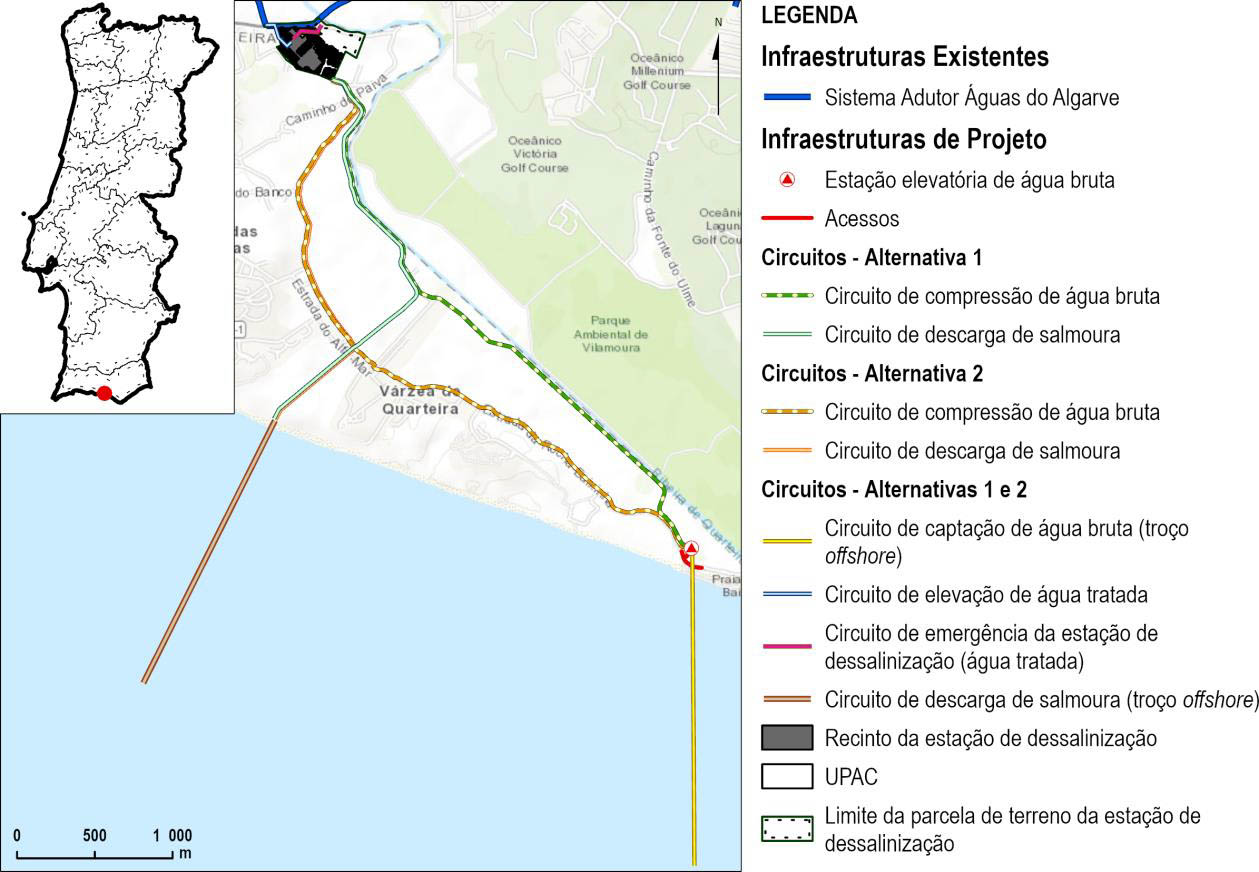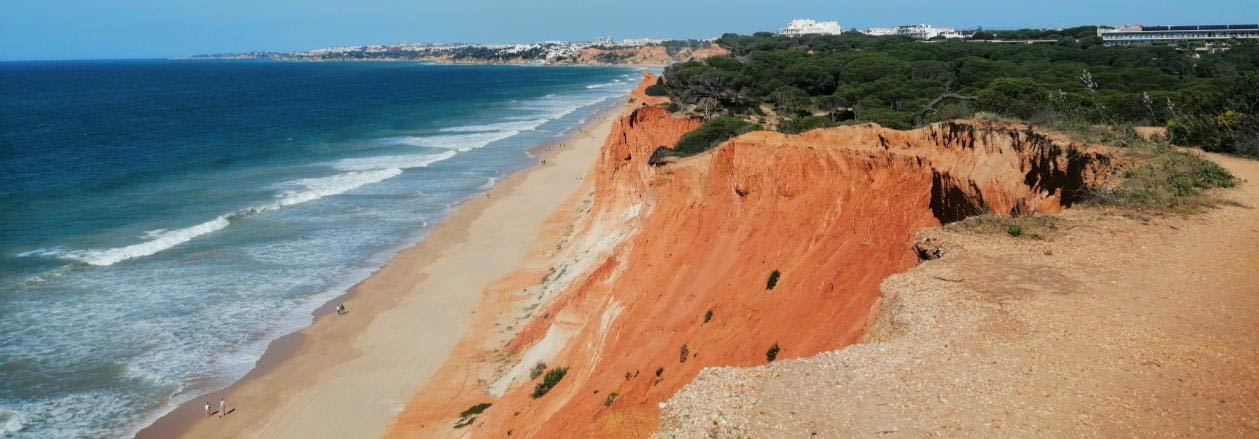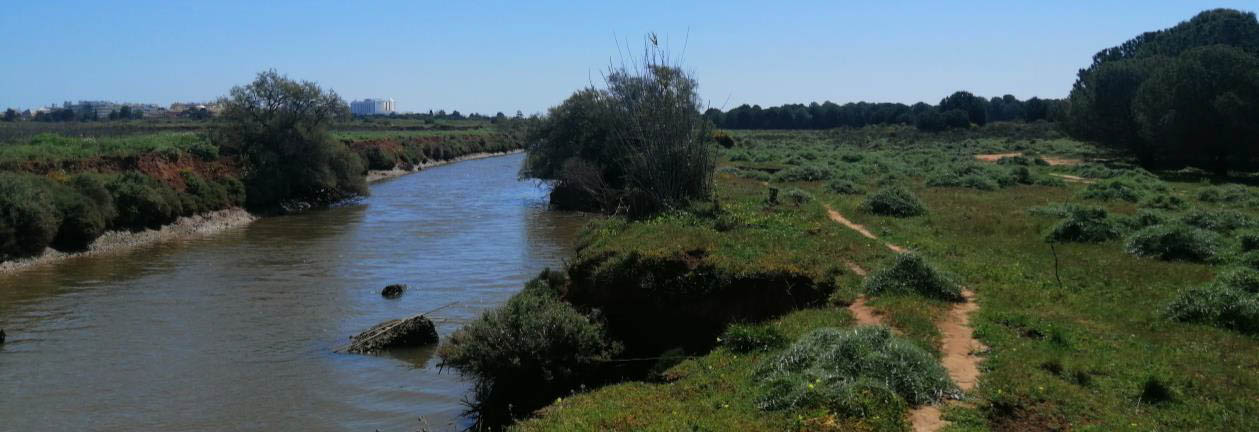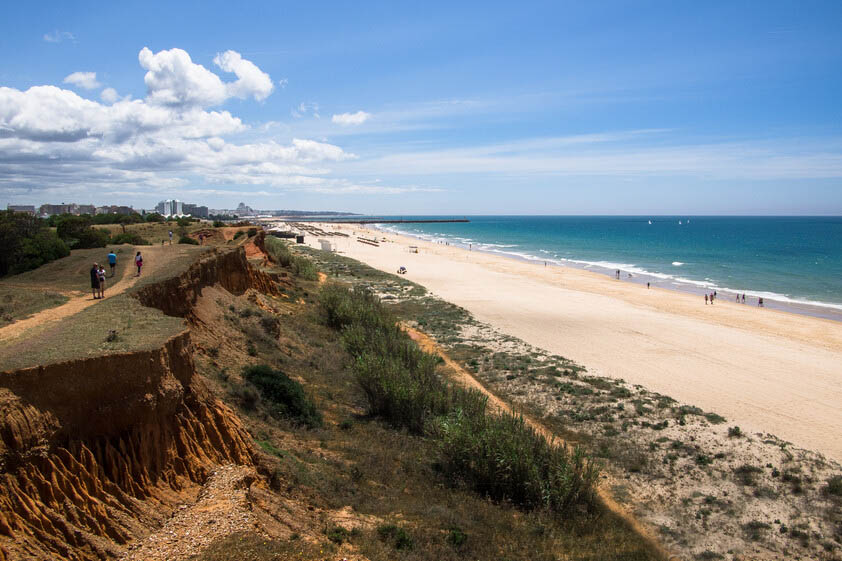The future Algarve Seawater Desalination Station, whose Environmental Impact study is in progress public discussion until December 19th, should be built in an area next to the final section of the Quarteira river, close to Rocha Baixinha beach, on the coast of the municipality of Albufeira.
According to the Non-Technical Summary, the Sul Informação consulted, there are two alternatives for the construction of the seawater lifting pipeline, one following the course of the Quarteira river to its mouth, near Vilamoura (alternative 1, 4,3 kilometers long, on land, plus 550 meters in a tunnel and 1450 meters at sea), another a little further south, following the Rocha Baixinha road and also ending near the mouth of the river (alternative 2, 4,9 km long on land, plus the tunnel and the underwater pipeline, with the same measures as the other alternative).
As in the case of water intake, the brine rejection pipeline produced by the desalination process also has two alternative routes being evaluated. In both cases, this brine will be dumped into the sea approximately 1,8 km from the coast.
To do this, it will be necessary to build a pipeline that crosses the cliff, the sand and extends 1,3 km beyond the surf zone, built by opening a trench on the seabed and laying the pipe.

The desalination system includes the construction of a seawater collection and elevation circuit, a Pumping Station (in a tower, next to the cliff), the Seawater Desalination Station (EDAM) itself, the water supply circuit treated water, the brine discharge circuit and an electricity production unit for self-consumption (UPAC), which will occupy 4,5 hectares.
According to the Non-Technical Summary, UPAC, to be installed inside the plot of land where the Desalination Station will be located, «will consist of around 10 photovoltaic panels, with the aim of, through photovoltaic energy, reducing consumption of energy at EDAM».
In the area where all this will be implemented, close to the Alfamar tourist complex and the Açoteias athletics track, next to the beaches of Falésia and Rocha Baixinha, the land is currently occupied mainly by temporary crops and pastures, «which occupy the banks of the river from Quarteira to, roughly, the Rocha Baixinha road, which effectively separates the pine forests and tourist developments, along the coast, from the agricultural area». There are also some orange groves and pine forests.
The Non-Technical Summary does not dwell much on the «main negative impacts», both in the construction phase (change in geomorphology and landscape, noise caused by the works), and in the exploration phase.
In the latter case, the main and most serious negative impact of this type of Desalination Station, the rejection of the brine that results from the process itself into the sea, is simply referred to as “management of waste and effluents associated with brine discharge”.
However, analyzing the remaining documents available, namely Tome 3 of the EIA, which refers to the impacts, the “negative” effects of the discharge of brine into the sea are analyzed in more detail.

«The impacts generated by the discharge of brine result from the local increase in salinity and the possible toxicity of the chemical compounds present in the brine (since there is no provision for pre-treatment of the brine prior to discharge), which can prove to be harmful or even deadly for the most sensitive organisms”, admit the authors of the Study.
«The brine discharge can also contain suspended solids, increasing the turbidity of the water, which affects the penetration of sunlight into the water, harming aquatic organisms, particularly those dependent on photosynthesis, in addition to which the sedimentation of these solids will bury the benthic organisms in the area", they continue.
On the other hand, «there is still the possibility that the discharge contains microorganisms or exotic propagules that could colonize the disposal site, although this is considered remote».
The EIA adds that, «in the surroundings of the rejection site, the sandy bottom predominates, where echinoderms, amphipods and molluscs are abundant, and seagrass is not common – the nearest seagrass meadow is located off Santa Eulália beach, approximately 2,5 km from the rejection site and based on a rocky bottom", adding that "this prairie is not expected to be affected by the saline plume".
Both on the rocky bottoms, which are located approximately one kilometer from the brine rejection site, and on the artificial reefs (2 km to the south), there will be an increase in salinity, but at a level that the EIA considers to be affordable for the marine species present in these reefs. zones.
Thus, despite admitting that the impact of brine discharge into the sea is "negative", the study considers that "this salinity should only be observed at the rejection site", which "is far from sensitive areas such as sea grasslands, rocky bottoms and artificial reefs, thus minimizing the impact of brine discharge on aquatic organisms”.

After the EIA has been delivered by the company Águas do Algarve last July to the Portuguese Environment Agency, the Evaluation Committee requested a large number of clarifications and additional information, so many that it took 235 pages to answer them. After the “EIA compliance decision” was obtained on October 27th, the public discussion phase is now moving forward,
Although there are many impacts that the construction and operation of the Desalination Station will have on land and at sea, the Environmental Impact Study explains that «the main reason for the implementation» of the project «is the need to create an alternative capable of guaranteeing the resilience of public supply to the region's population, even in periods of prolonged drought».
This project is, in fact, one of the components that forms part of the Algarve Regional Water Efficiency Plan (PREHA).
The Environmental Impact Study itself considers «to be viable for the construction of the Algarve Seawater Desalination Station in the configuration corresponding to Alternative 1», arguing, however, that it must be «ensured that compliance with all mitigation measures, compensation and planned monitoring programs”.

The company Águas do Algarve (AdA), which is the promoter of the Desalination Station project, has already welcomed the launch of the public consultation phase, which began on November 6th and ends on December 19th, hoping that this "will be participated”.
AdA recalls, in a note sent to newsrooms, that the Desalination Plant is “one of the measures financed under the Recovery and Resilience Plan for water management in the region, with an investment of around 90 million euros”.
«The Desalination Solution Project in the Algarve region foresees an increase in the resilience of water resources, through an increase in water availability and the connection between systems, increasing by around 16 hm3/year», adds the AdA.
«This is the implementation of an alternative capable of guaranteeing the resilience of public supply to the population of the Algarve region, even in periods of prolonged drought, aiming to guarantee the availability of water for current and future consumption», he argues.
The project will also allow «increasing the resilience of the public water supply system for the entire Algarve, taking into account the seasonal behavior of consumption and the fact that water from the desalination process will feed the distribution system managed by Águas of the Algarve to serve the region».
Anyone who wants to participate in the public consultation or consult the documents that support it can do so by clicking here.


















Comments